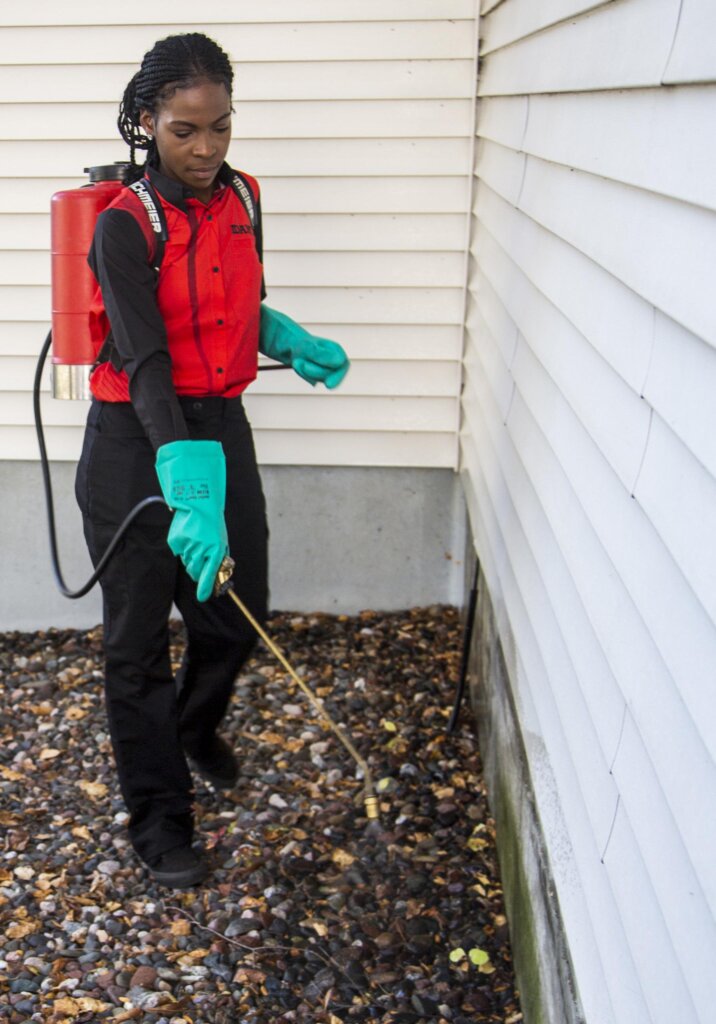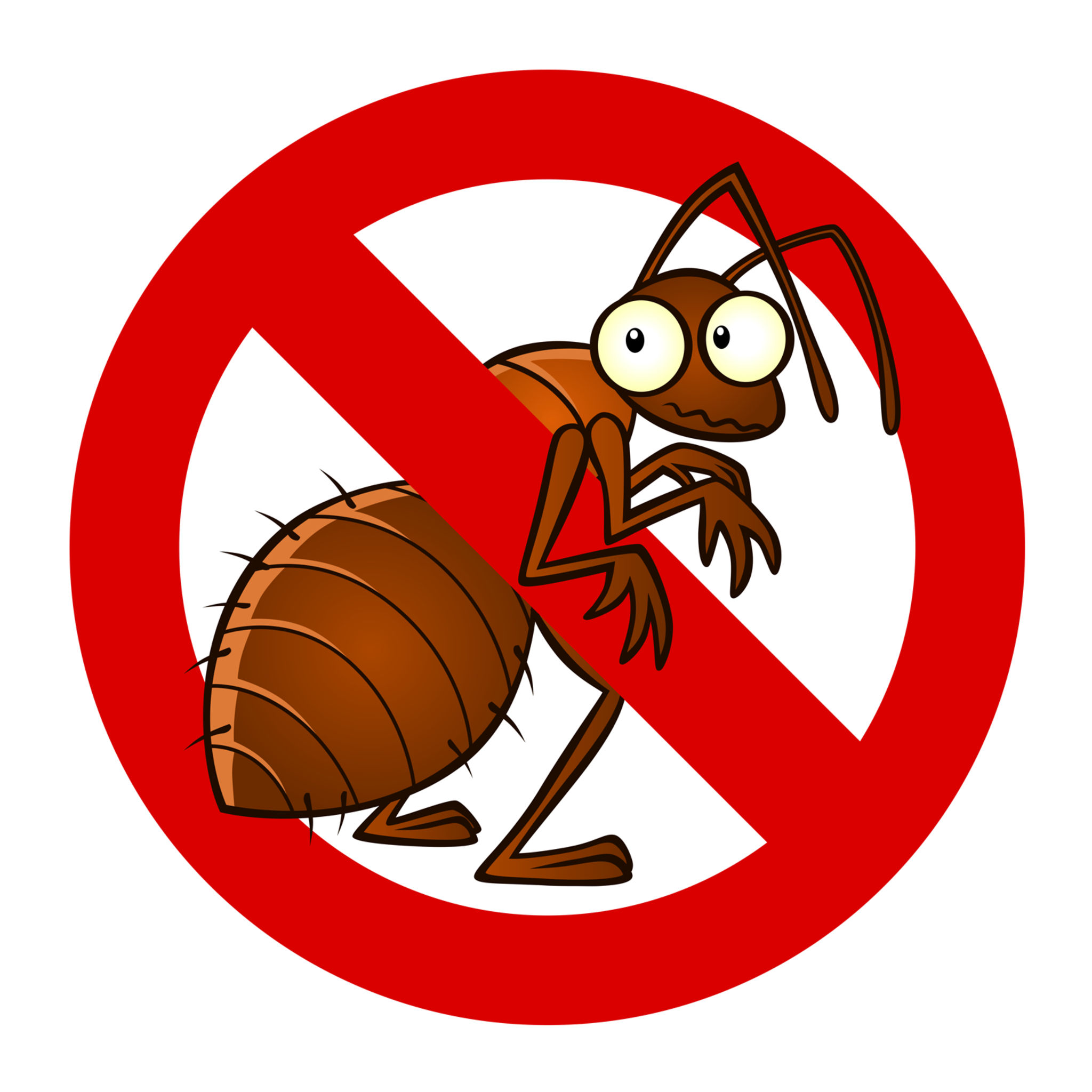Comprehensive A1 Pest Control in Portland Oregon Bed Bugs - Safe Treatments
Comprehensive A1 Pest Control in Portland Oregon Bed Bugs - Safe Treatments
Blog Article
Reliable Pest Control Solutions: A Comprehensive Take A Look At Extermination Techniques and Prevention Procedures
In the world of pest control solutions, the effective monitoring of problems needs a meticulous approach that incorporates numerous strategies and procedures for both elimination and avoidance. From Integrated Pest Administration (IPM) methods that focus on lasting solutions to chemical extermination strategies developed for targeted removal, the arsenal versus insects is large and complex.

Integrated Bug Administration (IPM) Methods
Integrated Insect Management (IPM) Approaches incorporate a thorough method to pest control that concentrates on tracking, control, and avoidance approaches to effectively handle insect populaces. By incorporating numerous techniques, IPM aims to decrease the impact of insects while additionally decreasing the dependence on chemical pesticides. Prevention lies at the core of IPM, emphasizing techniques like proper hygiene, maintenance of health, and sealing access indicate discourage insects from infesting structures. Monitoring plays an essential duty in IPM by on a regular basis inspecting and determining pest levels to identify the proper treatment limits. Control approaches in IPM prioritize using physical, organic, and cultural methods prior to turning to chemical treatments as a last hope. These methods include presenting all-natural killers, habitat alteration, and using trapping gadgets to maintain parasite populations in check. Overall, IPM fosters a sustainable and ecologically aware strategy to pest management, promoting long-term options that guard both human health and the community.
Chemical Elimination Methods
Chemical elimination methods are typically employed in insect control solutions to efficiently get rid of parasite populations that position a risk to human health and wellness and residential or commercial property. These techniques involve the use of numerous chemical substances specifically created to target and eliminate bugs such as insects, rodents, and various other unwanted creatures. The application of pesticides, pesticides, rodenticides, and various other chemical agents is carefully controlled to guarantee optimum efficiency while minimizing threats to humans, family pets, and the environment.
Among the crucial advantages of chemical extermination techniques is their capability to offer fast and targeted outcomes, making them particularly beneficial in cases of extreme invasions or urgent parasite control requirements - a1 commercial pest control portland. Nonetheless, it is necessary to stress the value of appropriate handling, application, and disposal of these chemical products to avoid unplanned harm
Furthermore, integrated insect administration (IPM) techniques usually incorporate chemical extermination techniques with various other approaches such as hygiene, habitat modification, and biological controls to develop a thorough and sustainable pest control approach. By integrating chemical extermination strategies sensibly within an IPM framework, insect control solutions can successfully handle bug populaces while lessening potential threats to human wellness and the environment.
Biological Bug Control Techniques
Utilizing natural killers and bloodsuckers to manage pest populaces is a lasting approach called biological pest control. This method utilizes the all-natural systems of the ecosystem to regulate bug populaces without relying on synthetic chemicals. One typical biological control approach entails presenting all-natural enemies of the target insect types, such as ladybugs for aphid control or nematodes her comment is here for termite invasions. These natural killers prey on the pests, aiding to maintain their populaces in check.
An additional efficient biological control strategy is the use of microbial insecticides. These are naturally occurring microorganisms, such as microorganisms, fungis, and infections, that specifically target and infect particular insect species. By making use of these microbial agents, bug populations can be successfully minimized without harming valuable organisms or causing injury to the setting.
Physical Insect Avoidance Actions
Implementing physical parasite prevention measures entails using barriers and architectural alterations to prevent insects from entering or infesting a residential property. Installing door sweeps, screens on home windows, and securing cracks in the foundation can help avoid insects like insects and rats from acquiring gain access to inside.
An additional physical prevention procedure is the use of obstacles like secure fencing to keep bigger pests such as deer or raccoons away from the residential property. By carrying out these physical bug prevention procedures, residential or commercial property owners can significantly decrease the danger of pest infestations and the damage they can trigger.
Specialist Bug Examination Procedures
Carrying out complete and systematic bug inspections is a basic element of professional bug management methods. Expert pest examiners are trained to thoroughly analyze homes for signs of problems, determining pest varieties, entrance points, and conducive problems. The evaluation procedure normally begins with a detailed evaluation of both the exterior and interior of the properties. This includes checking for parasite droppings, chomp marks, nests, and any architectural damage that might suggest pest task. Furthermore, examiners might make use of specialized tools such as moisture meters and borescopes to spot concealed infestations you can check here within walls or crawl spaces.

Verdict
To conclude, effective parasite control services utilize a selection of techniques, including Integrated Insect Monitoring approaches, chemical extermination methods, biological controls, and physical prevention procedures. Specialist parasite inspection procedures play a vital duty in recognizing and attending to pest concerns in a prompt fashion. By applying a combination of these methods, go to this website homeowner can efficiently take care of and prevent pest infestations.
From Integrated Insect Monitoring (IPM) strategies that focus on lasting options to chemical elimination methods designed for targeted removal, the arsenal against insects is complex and huge.Integrated Pest Monitoring (IPM) Strategies include a thorough strategy to pest control that focuses on avoidance, monitoring, and control approaches to effectively manage pest populaces.Chemical elimination methods are typically utilized in pest control services to effectively eradicate parasite populaces that present a risk to human health and residential property.Utilizing all-natural predators and parasites to handle insect populations is a lasting technique understood as biological pest control.In final thought, efficient pest control solutions use a range of methods, including Integrated Parasite Administration techniques, chemical extermination methods, organic controls, and physical avoidance procedures.
Report this page